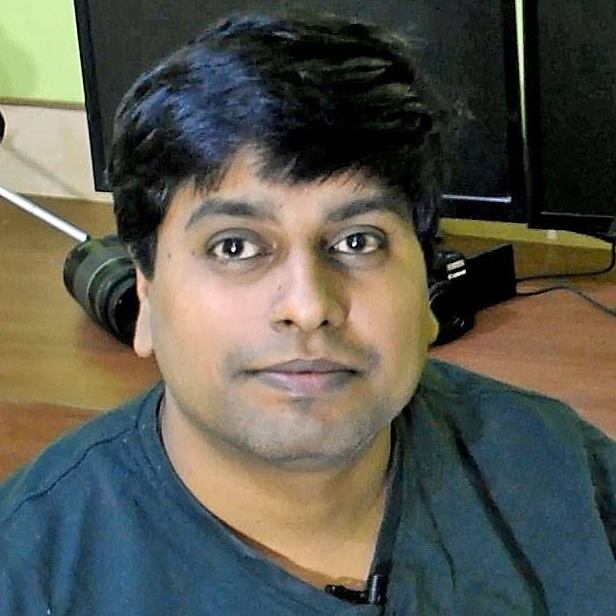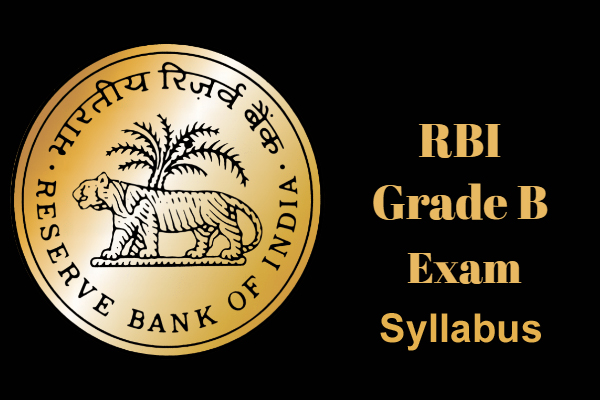Are you aspiring to join the prestigious ranks of the Reserve Bank of India (RBI) as a Grade B Officer? The RBI Grade B exam is one of the most sought-after competitive exams in India, offering a rewarding career in central banking, policy formulation, and economic regulation. With the RBI Grade B 2026 notification expected soon—likely in early 2026 based on previous trends—it’s time to gear up. Understanding the RBI Grade B syllabus 2026 and exam pattern is your first step toward cracking this exam.
In this comprehensive guide, we’ll break down the RBI Grade B syllabus for Phase 1 (Prelims), Phase 2 (Mains), and the Interview. We’ll also cover the exam pattern, key preparation tips, and updates from recent notifications (like the 2025 cycle, which serves as a blueprint for 2026). Whether you’re a fresher or a working professional, this post will help you strategize effectively. Let’s dive in!
Why Choose RBI Grade B? A Quick Overview
Before we jump into the syllabus, here’s why the RBI Grade B role stands out:
- Prestigious Job Profile: Handle monetary policy, financial stability, and economic analysis.
- Lucrative Salary: Starting basic pay of ₹55,200 per month, plus allowances—total CTC around ₹20-25 lakhs annually.
- Career Growth: Fast-track promotions, international exposure, and work-life balance.
- Eligibility Basics: Graduation with 60% (50% for reserved categories), age 21-30 years.
The selection process includes Phase 1 (Prelims), Phase 2 (Mains), and Interview. For General (DR) posts, all three stages apply; for DEPR/DSIM, it’s Phase 2 + Interview.
RBI Grade B 2026 Exam Pattern: Key Highlights
The RBI Grade B exam pattern remains consistent year-over-year, with minor tweaks announced in the notification. Expect a computer-based test (CBT) for both phases, with negative marking (0.25 marks per wrong answer in Phase 1).
Phase 1 (Prelims) Exam Pattern
This objective test filters candidates for Phase 2. Total: 200 marks, 120 minutes.
| Section | No. of Questions | Marks | Time (Minutes) | Key Focus |
|---|---|---|---|---|
| General Awareness | 80 | 80 | 25 | Current affairs, banking |
| Quantitative Aptitude | 30 | 30 | 25 | Data interpretation, arithmetic |
| English Language | 30 | 30 | 25 | Reading comprehension, grammar |
| Reasoning | 60 | 60 | 45 | Puzzles, logical reasoning |
- Qualifying Nature: Sectional cut-offs apply; overall score determines merit.
- Language: English/Hindi (except English section).
Phase 2 (Mains) Exam Pattern
More descriptive and analytical. Total: 300 marks, 270 minutes. For General posts:
| Paper | Subject | Type | Marks | Time (Minutes) |
|---|---|---|---|---|
| Paper 1 | Economic & Social Issues (ESI) | Objective + Descriptive | 100 | 120 |
| Paper 2 | English Writing | Descriptive | 100 | 90 |
| Paper 3 | Finance & Management (FM) | Objective + Descriptive | 100 | 120 |
- DEPR/DSIM Variants: Specialized papers on Economics/Statistics.
- Scoring: Objective (50 marks each for ESI/FM), Descriptive (50 marks each).
Interview and Final Selection
- Interview: 75 marks, focusing on personality, communication, and domain knowledge.
- Final Merit: Phase 2 (300) + Interview (75) = 375 marks.
Pro Tip: Download the official notification from rbi.org.in once released for 2026-specific updates.
Detailed RBI Grade B Syllabus 2026: Subject-Wise Breakdown
The RBI Grade B syllabus emphasizes conceptual clarity over rote learning, with a focus on current economic trends. Based on the 2025 notification and expert analyses, here’s the detailed syllabus for 2026 (expected to mirror 2025).
Phase 1 Syllabus
1. General Awareness (High Weightage – Aim for 50+ Score)
This section can make or break your Prelims. Focus on the last 6-8 months’ events.
- Banking & Financial Awareness: RBI functions, monetary policy, Basel norms, NPAs, financial inclusion.
- Current Affairs: National/international news, government schemes (e.g., PMJDY, Atmanirbhar Bharat), summits (G20, BRICS).
- Static GK: Economic survey, Union Budget highlights, reports (World Bank, IMF).
- Preparation Tip: Read The Hindu/Indian Express daily; use apps like Adda247 for quizzes.
2. Quantitative Aptitude
Similar to SBI PO level—practice speed and accuracy.
- Data Interpretation: Bar/line/pie charts, caselets, missing data.
- Arithmetic: Profit/loss, SI/CI, time/work, ratios, percentages, averages.
- Number Series: Wrong/missing number series.
- Mensuration & Geometry: Basic formulas.
- Preparation Tip: Solve 50 questions daily from Arun Sharma’s book.
3. English Language
Tests comprehension and vocabulary.
- Reading Comprehension: Economy/banking passages.
- Grammar: Error spotting, sentence improvement, fillers.
- Vocabulary: Synonyms/antonyms, cloze test.
- Para Jumbles & Phrases: Rearrangement, idioms.
- Preparation Tip: Read editorials; practice from Norman Lewis’ Word Power Made Easy.
4. Reasoning Ability
Puzzle-heavy; focus on high-scoring topics.
- Puzzles & Seating Arrangement: Floor-based, circular, linear (with/without variables).
- Logical Reasoning: Syllogism, inequalities, blood relations.
- Data Sufficiency & Coding-Decoding: Input-output, machine coding.
- Critical Reasoning: Assumptions, strengthening/weakening arguments.
- Preparation Tip: Use RS Aggarwal; aim for 40+ attempts with 90% accuracy.
Phase 2 Syllabus
Paper 1: Economic & Social Issues (ESI)
Objective (50 marks) + Descriptive (50 marks: 4 questions, 50 words each).
- Growth & Development: Measurement of growth (GDP, HDI), poverty alleviation, unemployment.
- Indian Economy: Planning, liberalization, agriculture/industry reforms.
- Social Issues: Demographics, urbanization, social justice (women empowerment, NGOs).
- Globalization: WTO, IMF, regional blocs.
- Preparation Tip: Refer to Ramesh Singh’s Indian Economy; write 2 essays weekly.
Paper 2: English Writing (Descriptive)
100 marks – Essay (50), Precis (20), Reading Comprehension (30).
- Essay Topics: Economic policies, social reforms, current events (e.g., Digital India, Climate Change).
- Precis Writing: Summarize passages effectively.
- Comprehension: Inference-based questions.
- Preparation Tip: Practice from previous years’ papers; focus on structure and vocabulary.
Paper 3: Finance & Management (FM)
Objective (50 marks) + Descriptive (50 marks).
- Financial System: Regulators (RBI, SEBI), banking structure, money markets.
- Financial Markets: Derivatives, bonds, forex.
- Management: Leadership, motivation theories, corporate governance.
- Risk Management & Ethics: Basel III, fraud prevention, CSR.
- Preparation Tip: Read RBI’s annual reports; use Anuj Jindal’s FM notes.
For DEPR/DSIM: Advanced syllabus on Economics, Statistics, and related quantitative methods—check official notification for specifics.
How to Prepare for RBI Grade B 2026: Pro Tips for Success
- Create a Study Plan: Dedicate 6-8 months; 4 hours daily for Phase 1, shift to Phase 2 post-Prelims.
- Resources:
- Books: Indian Economy (Ramesh Singh), FM (Prasanna Chandra).
- Online: EduTap, ixamBee for mocks; YouTube for ESI/FM concepts.
- Mock Tests: Take 2 full-length tests weekly; analyze errors.
- Current Affairs: Follow BeePedia or monthly PDFs.
- Time Management: Practice sectional timing to avoid surprises.
- Health Check: Balance study with exercise—burnout is real!
Common Mistake to Avoid: Ignoring descriptive papers—practice writing daily.
Expected Changes in RBI Grade B 2026 Syllabus
While the core syllabus is stable, watch for updates on fintech, sustainable finance, and AI in banking, as per RBI’s 2025-26 priorities. The notification will confirm any tweaks.
Conclusion: Your Path to RBI Grade B Success Starts Now
Mastering the RBI Grade B syllabus 2026 requires discipline and smart prep. With the exam likely in mid-2026, start today—consistency beats intensity. Stay updated via RBI’s website and join forums like Reddit’s r/forumRBI for peer insights.

Hi, I’m Varun Pathak, the founder of TheSarkariNaukri.com—a dedicated platform for the latest updates on government jobs (Sarkari Naukri) in India. With years of experience curating reliable information on job vacancies, admit cards, exam results, and preparation strategies, I help thousands of aspirants navigate the competitive world of public sector opportunities. Passionate about job security, career growth, and empowering freshers for roles like IAS, IPS, and PSU positions, I update the site regularly with actionable insights for 2025 and beyond. Let’s connect to turn your career dreams into reality!
